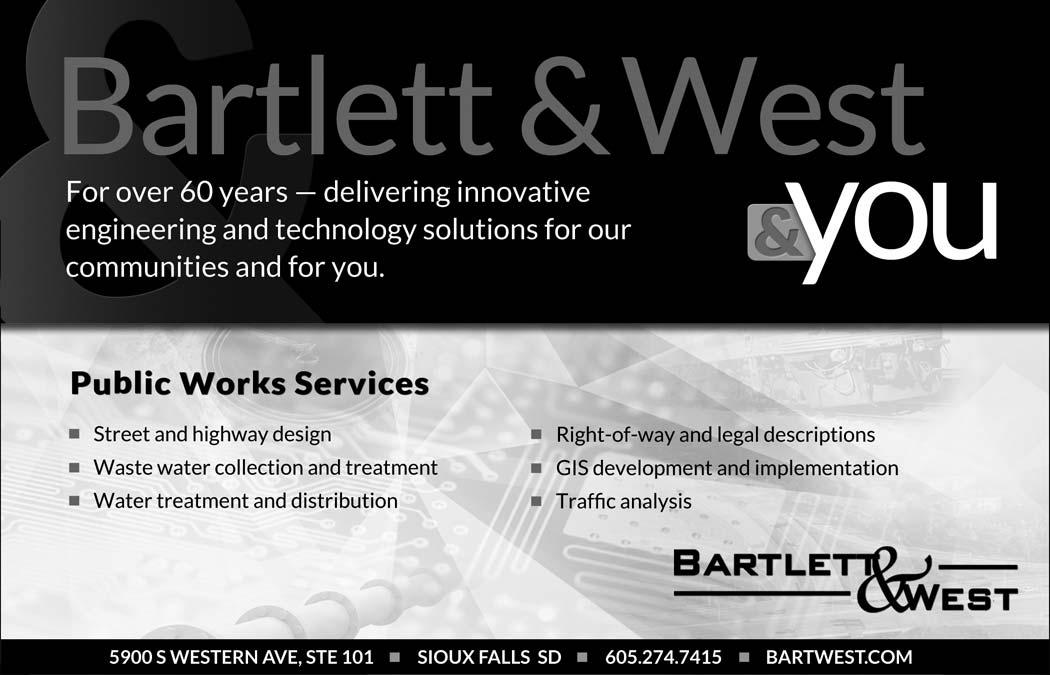
6 minute read
Change Your Change Plan
Change Your Change Plan: Five Principles for Resolving Lingering Organizational Problems
By Geoffrey Tumlin, Ph.D.
Advertisement
This article was originally published in the June 2014 issue of Texas Town & City, and is republished here with the written permission of the Texas Municipal League and author Geoffrey Tumlin, Ph.D.
Are some of your best people leaving for other jobs or other cities? Is there too much fighting going on among your executive directors? Does there seem to be a lack of motivation in some of your departments? If issues like these are present in your city, consider gathering a group of key leaders to tackle the lingering organizational problems.
Everyone knows it’s demoralizing to work for an organization that can’t – or won’t – fix obvious problems. But the flipside is also true: a city that takes aim at a longstanding issue and resolves it, inspires confidence in its ability to handle future challenges. And the very good news is that your employees are more receptive to making work-related changes than you may think. My colleagues and I have spent many years helping organizations of all sizes gather a critical mass of supporters and grapple with serious organizational problems. In our experience, few things unlock employee motivation as much as tackling a problem that’s negatively impacting their daily work life. In fact, fixing a persistent organizational problem provides a double-barreled return on investment: the problem gets resolved, and employees see that the organization has the capacity to self-correct.
1. Get plenty of cooks into the kitchen. Most organizational-level problems require a critical mass of supporters to resolve, so gather up your working group from the start. To address an important problem like disengaged employees, feuding department heads, or alienated staff, you need a number of employees who will work with you long enough to implement lasting solutions. The number of people you need will vary depending on the situation. For example, you’ll need a smaller number of people to deal with feuding managers than you will to address disengaged employees. Just remember that it’s
essential to include people early in the problem-solving process, as a mountain of research says that input is a crucial factor in generating buy-in. It’s much easier for people to support a change they had a hand in crafting in the first place.
Organizational change initiatives fail for many reasons, but a main reason is that people reflexively resist solutions that they feel are jammed down their throats. Giving people who have a stake in the problem a meaningful voice in the solution usually channels their good intentions in support of finding a workable remedy to the issue.
2. Don’t tell people what they want to tell you. Problems are an organization’s worst-kept secret, but that’s actually a source of strength because by the time most organizations get around to addressing a lingering issue, employees have been thinking about it for months (if not longer). By then, there have usually been plenty of informal discussions about the problem, and people are more than ready to address the situation.
By the time an organization addresses a simmering issue, it’s usually remarkably easy to get agreement on two things: (1) there’s something wrong, and (2) we need to do something about it. Unfortunately, it’s even easier for the formal leader of the meeting to just explicitly state these two things. Even if the problem is obvious, what you miss by short-circuiting the process is the ready-made unity that’s on offer. Don’t squander the opportunity to secure this easy agreement.
In any human interaction – but especially when you are trying to build consensus – remember this rule of thumb: never tell people what they want to tell you. People will work much harder to solve their problem than they will to solve your problem. And when it comes to longstanding – and, consequently, well-defined – organizational issues, those problems are the same.
3. Don’t get hijacked by the “how.” Once you have consensus that there’s a problem requiring resolution, don’t let that unity get dismantled by contentious debates about the “how.” The “how” – he steps to solve the problem – are obviously important, but can easily drive a wedge into your critical mass of supporters when discussed ad infinitum. It’s important to periodically remind the group of their unity around the problem and the need to solve it.
The need to solve the problem is your rallying point: come back to it, let people regroup, and then move forward with a discussion about the steps toward a solution. Use the agreement around the need to solve the problem as a

reminder of the consensus and the shared commitment to resolve the issue.
4. Love the complainers. At first, it’s hard to separate the people who care the most about an organization (or a department) from the people who are complaining the most about it. As you start to tackle a lingering organizational problem, some of your biggest allies will have a strange way of showing their support. The people who care the most will often complain the most forcefully about problems, and express some of the most stinging criticisms.
But you are going to need the energy and the passion of these committed complainers to make the change stick. Besides, a funny thing happens when you start making progress on the problem. The complainers who were sincerely focused on the problem will usually stop criticizing and start pushing. And the much smaller number of people who are still complaining – after you’ve included them in the process, and after you’ve made legitimate strides in addressing the problem – will reveal themselves as perpetual complainers who are unlikely to ever be satisfied.
5. Work on people problems last. People problems – like unmotivated employees, fighting department heads, or frustrated staff – are often caused by structural problems (the underlying conditions; something your city or a department is or is not doing). What looks like a problem with Bob, Jim, and Suzy may really be a problem with new city policies. An apparent problem with the fire department or with the HR department is really a problem of unclear performance expectations. Or maybe you didn’t have an employee motivation issue until public works saw a dramatic decrease in road improvement projects.
The strong link between individual behavior and work structure means that the most effective way to solve people problems is to first look for likely structural causes of the behavior. That’s because structural issues like unclear lines of authority, confusion on priorities, problems with oversight, ineffective meetings, or outdated organizational processes are usually responsible for a lion’s share of people problems.
More than a handful of unmotivated employees, complacent managers, or discontent workers usually suggest that there’s a structural fix required before the people problems can be meaningfully addressed. Your supervisory structure might be out-of-date, new tasks might be more onerous than you’d expected, or something you can’t see might be

happening during interactions with citizens that’s sapping employee morale.
Resist the urge to hire or fire your way out of people problems until you have addressed the structural part of the problem first. Structural solutions will often eliminate many of your people problems. And once you’ve addressed the structural issues, the much smaller number of people problems that remain become extremely obvious and can usually be addressed quickly and confidently.
Consider gathering a group of key leaders to tackle an organizational problem that’s currently causing you headaches. You might be pleasantly surprised to discover just how ready a critical mass of your coworkers is to enact the kind of meaningful organizational change you’ve been looking for.
Geoffrey Tumlin is the CEO of On-Demand Leadership and is the author of the critically acclaimed book, Stop Talking, Start Communicating, published in 2013 by McGraw-Hill. A graduate of West Point with a doctorate from the University of Texas at Austin, Geoffrey works with public, private, and governmental organizations throughout America. You can learn more about the author at ondemandleadership.com or at tumlin.com.











